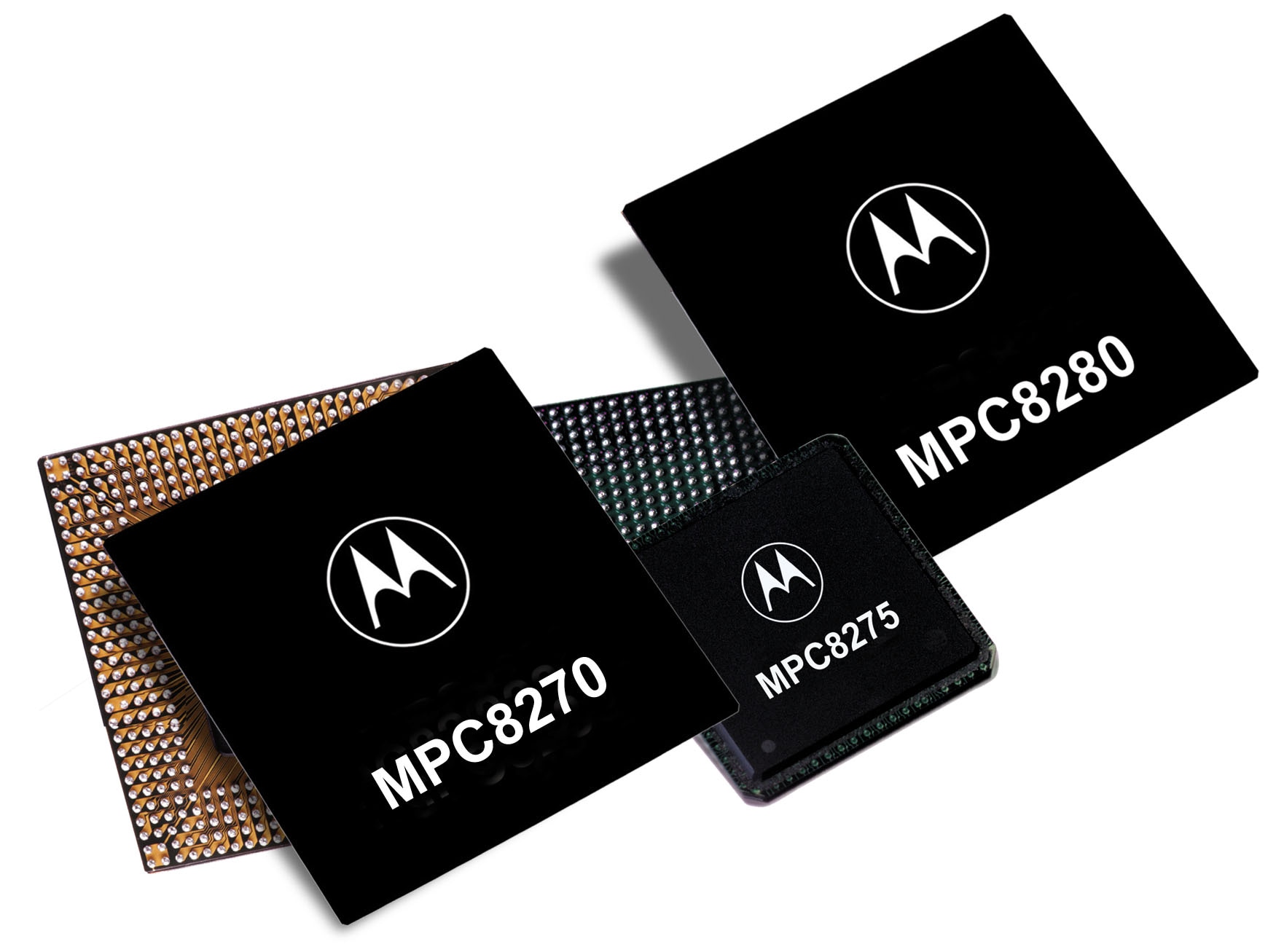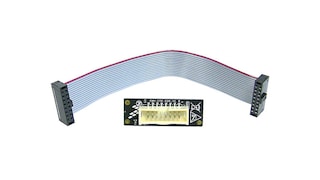Design Files
2 design files
-
Models
Core Model for PowerQUICC II HiP7 SWIFT Full-Function Model for Linux
-
Models
Core Model for PowerQUICC II HiP7 SWIFT Full-Function Model for Solaris
Sign in for a personalized NXP experience.
Introducing the next generation of PowerQUICC® II™ processors: the MPC8270, MPC8275 and MPC8280.
Utilizing Our HiPerMOS7 0.13-micron process technology, the next generation PowerQUICC II family offers a range of performance, feature enhancements and package options with lower power requirements. Ideal for wired and wireless infrastructure communications processing tasks, enhancements to the PowerQUICC II family offer system designers a high degree of integrated features and functionality and a compelling, proven architecture.
The next generation of PowerQUICC II processors is an optimum solution for integrated control and forwarding plane processing in high-end communications and networking equipment -- such as routers, DSLAMs, remote access concentrators, telecom switching equipment and cellular base stations. Combining extensive layer 2 functionality with control plane processing, Our PowerQUICC II processors include a high-performance embedded 603e™ core built on Power Architecture technology, and a powerful RISC-based Communications Processor Module (CPM). The CPM off-loads peripheral tasks from the embedded core and provides support for multiple communications protocols, including 10/100Mbps Ethernet, 155Mbps ATM and 256 HDLC channels. And, of course, the next generation PowerQUICC II devices retain full software compatibility with the PowerQUICC II family.
A range of performance and package options
Taking advantage of the 0.13-micron process, the next generation of PowerQUICC II devices offers significant performance increases and power savings over the current generation PowerQUICC II devices, with speeds of up to 450MHz and 300MHz in the core and CPM respectively at less than 2 watts. The new processors continue to enhance the PowerQUICC architecture's ATM support, offering up to 2 UTOPIA ports with support for up to 31 PHYs per interface -- ideal for high-density DSLAM line cards.
The next generation of PowerQUICC II solutions also delivers support for USB, an on-target addition for high performance SOHO and CPE networking equipment. And unlike most other integrated communications processors in the market, the PowerQUICC architecture integrates two processing cores to handle specific tasks: the core built on Power Architecture technology and the RISC-based CPM -- enabling a balanced approach for systems by handling both high-level tasks and low-level communications all in one integrated device.

| 8270VR | 8270 | 8275VR | 8280 | |
|---|---|---|---|---|
| SMCs | 2 | 2 | 2 | 2 |
| Multichannel HDLC | 128 | 128 | 128 | 256 |
| FCCs | 3 | 3 | 3 | 3 |
| UTOPIA (ATM) | 0 | 0 | 2 | 2 |
| USB | 1 | 1 | 1 | 1 |
| Package | 516 PBGA | 480 TBGA | 516 PBGA | 480 TBGA |
| IMA/TC Functionality | NO | NO | NO | YES |
| MII/RMII (Fast Ethernet) | 3 | 3 | 3 | 3 |
| SCCs | 4 | 4 | 4 | 4 |
| 60x/Memory Bus | 66 | 83/100 | 66 | 83/100 |
| CPM | 166 | 250/300 | 166 | 250/300 |
| CPU | 266 | 333/450 | 266 | 333/450 |
| Local Bus | - | 83/100 | - | 83/100 |
| I²C/SPI | 1 | 1 | 1 | 1 |
| PCI | YES | YES | YES | YES |
| I/D Cache | 16/16 | 16/16 | 16/16 | 16/16 |
| IMMR_ [16-31]¹ | Rev_Num² | Qualification | Revision | Process | Mask | |
|---|---|---|---|---|---|---|
| MPC8260 Family | XC | A.1 B.3 C.2 |
0.29 µm (HiP3) |
0K26N 3K23A 6K23A, 7K23A |
||
| MPC8260 Family | XC MC MC |
A.0 B.1 C.0 |
0.25 µm (HiP4) |
2K25A 4K25A 5K25A |
||
| MPC8280 Family | - MC MC |
0 0.1 A.0 |
0.13 µm (HiP7) |
0K49M 1K49M 2K49M, 3K49M |
||
| MPC8272 Family | PC MC |
0 A.0 |
0.13 µm (HiP7) |
0K50M 1K50M |
Notes:
1. The IMMR[16-31] indicates the mask number.
2. The Rev_Num located at offset 0x8AF0 in DPRAM indicates the CPM microcode revision number.
3 . Encryption Enabled.
4 . Encryption Disabled.
Masks and versions table last updated on 14OCT2004.
| | | | | |
|---|---|---|---|---|---|
| | | | | |
| | | | | |
| | | | | |
| | | | | |
| | | | | |
| | | | | |
| | | | | |
| | | | | |
| | | | | |
| | | | | |
Quick reference to our documentation types.
1-5 of 46 documents
There are no results for this selection.
Please wait while your secure files are loading.
1-5 of 46 documents
2 design files
Please wait while your secure files are loading.
2 design files
2 hardware offerings


1 hardware offering

To find additional partner offerings that support this product, visit our Partner Marketplace.
2 hardware offerings


Quick reference to our software types.
2 software files
Note: For better experience, software downloads are recommended on desktop.
Please wait while your secure files are loading.
1-5 of 7 software offerings
To find additional partner offerings that support this product, visit our Partner Marketplace.
2 software files
Note: For better experience, software downloads are recommended on desktop.
1-5 of 8 engineering services








There are no results for this selection.
There are no results for this selection.
To find additional partner offerings that support this product, visit our Partner Marketplace.
3 trainings
To find additional partner offerings that support this product, visit our Partner Marketplace.
3 trainings
To find additional partner offerings that support this product, visit our Partner Marketplace.